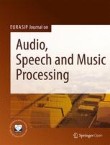Non-parallel dictionary learning for voice conversion using non-negative Tucker decomposition
Voice conversion (VC) is a technique of exclusively converting speaker-specific information in the source speech while preserving the associated phonemic information. Non-negative matrix factorization (NMF)-ba...
